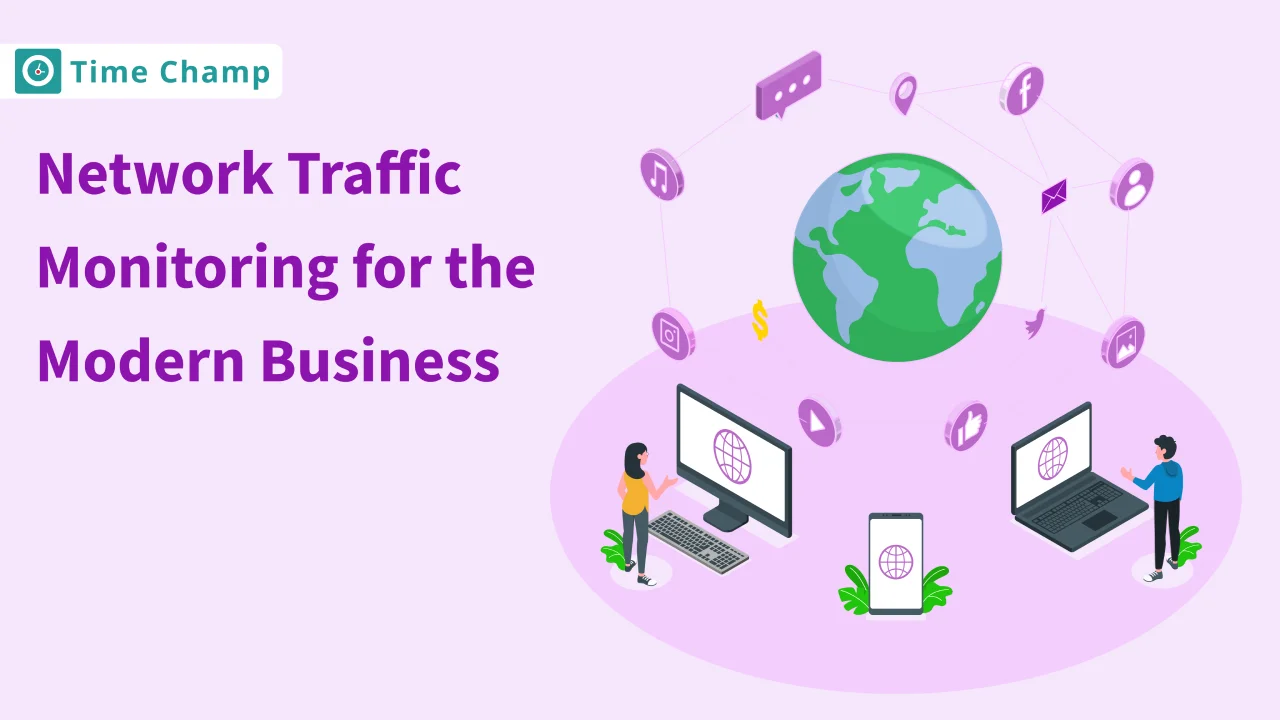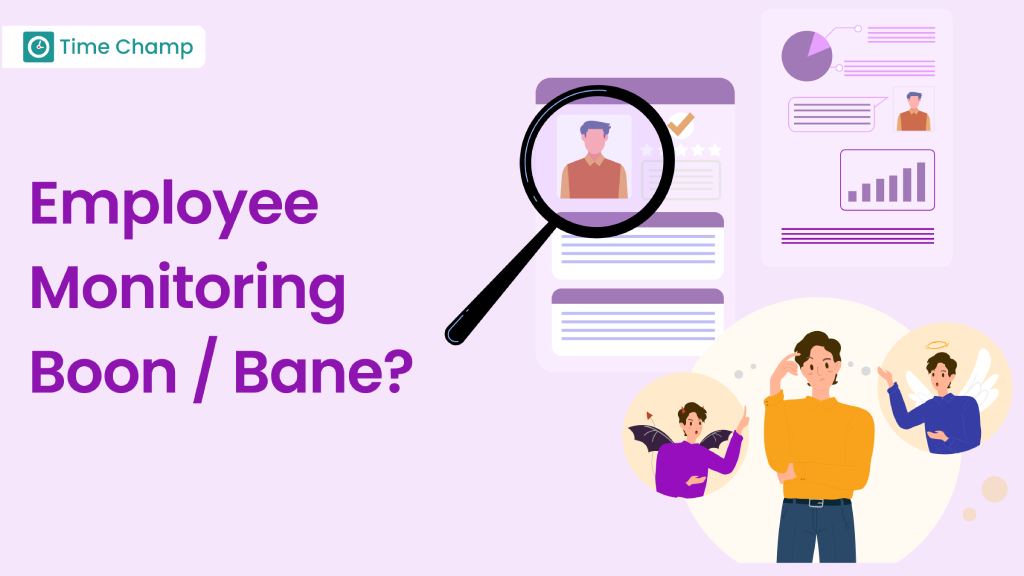The flow of data in the computer network is very similar to the flow of the blood in an IT infrastructure of the organization. Network traffic monitoring is a very important IT practice that involves analyzing this data exchange to ensure network performance and monitoring, security, and also reliability. Operations can be greatly improved, threats can also be prevented, and better decisions can be easily made by monitoring and analyzing the packets of data moving across the network.
What is Network Traffic Monitoring?
Network traffic monitoring is the systematic observation, capturing, and analysis of the communications and data transfer that is always taking place within or across the computer network. This procedure involves internet usage monitoring and control for the best performance, safety, and also stability of the network.
The monitoring is often of multiple variables such as bandwidth utilization which is the number of data sent in the given period and the type and also the amount of traffic. It serves multiple purposes:
Real-Time Analysis
The real-time analysis is then enabled by a reliable network traffic monitoring system that displays the current network activity as it unfolds. This immediate visibility is also very critical for the quick response to new threats or any sudden spikes in traffic.
Bandwidth Utilization
One of the most important aspects of network management is the bandwidth allocation over the various applications. Network traffic monitoring tools can identify the applications that are using up the most bandwidth to help you decide where to focus your resources.
Troubleshooting
If any problems emerge on the network, traffic monitoring is always used as the first step in troubleshooting. It points out the cause of the problem, which could be a malfunctioning device, a blocked connection, or an intruder as well.
Security Monitoring
Network traffic monitoring can also be used as an early warning system for security breaches. This helps the administrators to identify the abnormal traffic patterns or the malicious signatures which can be used to take timely action to counter the threats.
Application Performance
A detailed analysis of the traffic data will provide you with a lot of valuable information on the performance of the different applications on the network. This information is very helpful to tune the performance significantly and also to ensure that the critical applications have sufficient resources.
What should Network Traffic Monitoring do?
A good network traffic monitoring should provide a clear view of what is happening on your network. It should keep track of all the incoming and outgoing traffic flow, allowing you to determine the volume, type, and also direction of the data. It should alert the administrators about any irregularities that may indicate a network issue or a security threat. Furthermore, it must provide actionable information that helps to sustain the network’s health, improve its performance, and plan the growth of the future network.
How to Monitor Network Traffic
Network traffic monitoring is a continuous activity that requires a systematic method. Here’s how to get started:
Step 1: Select the Best Fitting Data Source
The first step you should take is to identify the data source that meets all your requirements. This may include Simple Network Management Protocol (SNMP) data from the network devices or flow data (such as NetFlow or sFlow) which offers a more granular look at the traffic.
Step 2: Find the Primary Applications that are Running on Your Network
What are the primary applications that run on your network? This knowledge is the basis of understanding all your network traffic management patterns and also efficient bandwidth management.
Step 3: Apply Network Monitor Tools
Given the numerous network traffic monitoring tools, find the one that matches the size and complexity of your network. Tools vary from simple utilities that provide a single view of the current traffic to complex systems with detailed analytics and automated alerting.
Monitoring Network Traffic: Why It Is Important
One of the most difficult tasks of effective network management is network traffic monitoring. There are compelling reasons to vigilantly oversee the digital exchange in your network:
Identifying and Resolving Performance Issues
Performance bottlenecks can cripple productivity. Real-time traffic monitoring provides the ability to determine what is slowing down the speed of the network or causing problems with the service. If it is the old hardware that needs to be upgraded, or if the number of users streaming the video content is too high, you will be able to provide sufficient evidence.
Enhancing Security Posture
As modern cyber attacks have become more sophisticated, network traffic monitoring is very critical to detect any unusual patterns that may indicate an attack. It is equally important for IDS and also the network anomaly detection tools to detect such threats before they cause any damage.
Ensuring Compliance
Data protection and privacy are also highly regulated in most industries. By constant monitoring of the network, it is ensured that all these regulations are met and that confidential information is always kept safe from unauthorized disclosure to avoid very expensive legal fines.
Optimizing Resources
It is also an excellent source of information about which applications and services use the most bandwidth. On this basis, the companies can choose where to invest the resources to build the most efficient network architecture.
Supporting Growth and Scalability
As the business grows, the need for a very strong network infrastructure also increases a lot. Strategic planning is always done for the scalability of the network that supports the business grows over time and the internet traffic patterns are continuously monitored.
Types of Network Traffic
Knowing the different types of network traffic is crucial in understanding how your network is used and how to prioritize services:
- Data Traffic: These also encompass file transfers, emails, and other data that pass through your network. The network performance and monitoring tools will likely be affected by the uncontrolled data traffic.
- Voice Traffic: Some quality-of-service requirements are very necessary for VoIP and also other voice services. However, if it is necessary to reduce the latency and jitter, the voice traffic should be prioritized in the network.
- Video Traffic: Streaming video, whether for video conferencing or media consumption, is a bandwidth-intensive application. In the network configuration, the video traffic has to be handled very carefully so that it does not affect the other services.
- Email Traffic: Even though email is regarded as the key communication channel by a lot of companies the email traffic includes numerous attachments, which are widely considered to be very voluminous. Monitoring ensures that the integrity of the email delivery systems is very high.
- Web Traffic: Web browsing and web applications are an integral part of modern business. Web traffic understanding is an very essential aspect of managing the bandwidth and also ensuring that the business-critical applications get the priority.
Ways to Monitor Network Traffic
Monitoring network traffic can be approached in several ways, each with its own set of tools and methodologies:
1. Packet Analyzers: Advanced analysis is usually done using many tools such as the Wireshark
Packet analyzers are great network troubleshooting and also security auditing tools. They function by intercepting every data packet passing through a network decrypting the contents of the packet and then presenting it in a readable format. This enables the network administrators to perform the packet-level analysis of the network activity.
One of the main features of Wireshark, one of the most popular packet analyzers, is the network packet dissection due to its advanced protocol support. The filtering of the traffic by protocol type, source, destination, and a lot of other parameters allows the administrators to identify the critical information. The packet analyzers are very powerful, but they require some advanced level of technical knowledge to be able to use them efficiently.
2. Flow Analyzers: The technologies such as NetFlow provide high-level insights
Flow analyzers analyze the flows that are the packet streams moving from the source to the destination. They generalize the packet data to provide a much wider view of the network traffic patterns and also dynamics.
One of the most popular methods of flow analysis is the NetFlow, which is a protocol offered by Cisco. It makes it possible for the network administrator to monitor the source, destination, volume, and also routes of the traffic on a network. It facilitates capacity planning, troubleshooting, and also the network utilization understanding. The aggregation and summarization of flow data renders it much more manageable and far less granular than the packet-level data.
3. SNMP Monitoring: A Standardized Approach to the Simple Network Management Protocol
SNMP monitoring involves using the Simple Network Management Protocol to communicate with network devices such as routers, switches, and also servers to obtain performance information. They have SNMP agents that provide a lot of metrics, such as bandwidth used, errors, status, and so on, to a central collector.
SNMP is a protocol that is widely used and it is also very effective in different settings. It is especially highly efficient in collecting the statistical information over the period which will be used for the trend analysis and also infrastructure development. Moreover, SNMP requires much fewer resources than any other monitoring technique.
4. Network Probes: Strategic Placement for Targeted Monitoring
Network probes are either device or software applications used to measure and also network traffic monitoring. They can be located at the entry/exit points, in front of the vital servers, or along the main paths of communication to measure the latency, speed, and also packet loss. Probes allow for real-time monitoring and can also be set to send out alerts if the network performance monitoring falls below the limits that are set.
5. SIEM Systems: Comprehensive Security Analysis
The security analytics method utilized by the SIEM systems (Security Information and Event Management) is extremely broad. They monitor the log information from the different parts of the IT infrastructure such as network traffic monitoring and look for any variations and potential security incidents.
SIEM solutions link the pieces of the various systems to provide an overall view of the malicious activities or the policy breaches. Such tools allow the incident response teams to respond promptly to the security alerts and contain the threats very efficiently.
All these methods have their strengths and in most cases, organizations will use a combination of these tools to achieve a holistic view of the performance and also in the security of their network.
The Best 4 Network Monitoring Tools
1. SolarWinds Network Performance Monitor
About the Company and System: The world’s leading provider of IT management software is SolarWinds. Their NPM is uniquely tailored to address the network outages and improve the performance with sophisticated network troubleshooting for on-premises, as well as hybrid, and also cloud services.
Key Features:
- Comprehensive Fault Monitoring: It quickly detects, diagnoses, and resolves the many network performance issues and also outages.
- Intelligent Network Alerting: Complex or simple nested trigger conditions for customizable alerts.
- Deep Packet Inspection and Analysis: Deep analysis of the network traffic to identify the causes of excessive bandwidth consumption.
- Dynamic Network Mapping: It automatically maps your network topology.
- Wireless Network Monitoring and Management: Monitors the health and also the performance of the Wi-Fi node.
Pricing:
While SolarWinds does not show the prices on their website directly, they offer a fully functional 30-day trial. The pricing plans are available from their sales department.
Customer Ratings and Reviews:
SolarWinds has a very positive market reputation with many users praising it for its scalability, detailed insights, and also its ease of use.
2. Time Champ
About the Company and System: Time Champ is a universal product that was designed to address various monitoring requirements that a company may have ranging from network analysis to user activity. Time Champ presents the user’s working hours in several categories. This visualization allows employers to easily understand the high-level network activity and user behavior in various applications, including development, communication, office apps, and also entertainment.
Key Features:
- Smart Alerts and Notifications: Receive real-time alerts on critical network events and also issues.
- Activity Monitoring: Observe the network activity tracking to comprehend user behavior and productivity.
- Keystroke Logger: All keystrokes should be recorded during the deep data collection since this is highly beneficial for security audits.
- Screen Recording: Permits the visual perception of the actions using the screen recording user to perfect the troubleshooting process.
- Detailed Reporting: Gain access to structured reports to make sensible decisions regarding the network’s health and user performance.
Best Fit For:
Time Champ is a tool developed for organizations that require an agile solution for granular monitoring, ensuring network efficiency, and also enhancing the security of large corporations.
3. Wireshark
About the Company and System: Wireshark is a free, open-source network protocol analyzer that lets you capture and interactively browse the packets on a network. It has become the industry norm in several industries and also in schools.
Key Features:
- Live Capture and Offline Analysis: Live network data or offline data from a capture file should be analyzed.
- Standard Three-Pane Packet Browser: Browse through the network data that has been captured and view the complete packet details.
- Rich VoIP Analysis: Play the VoIP calls.
- Powerful Display Filters: Use the variety of filters available to drill down to the precise traffic that you are interested in.
- Multi-Platform: There are many different Windows, macOS, Linux, and also many other operating systems.
Pricing:
Wireshark is open-source software that you can download for free from their website.
Customer Ratings and Reviews:
Wireshark is typically lauded by users for the power of its packet analysis but with a steep learning curve for the freshers.
4. DataDog
About the Company and System: DataDog is a cloud-based infrastructure monitoring tool that gathers information from servers, containers, databases, and also from third-party services.
Key Features:
- Real-Time Interactive Dashboards: Tailor the dashboards to receive all of your data and track it in real-time.
- Seamless Integration: It connects to various services and also to platforms for comprehensive monitoring.
- Log Management: Perform the analysis and save the logs to improve understanding and troubleshooting process.
- Alerting: Develop real-time alerts based on the metric thresholds, anomaly detection, and also forecast alerts.
- APM & Continuous Profiler: Find the inefficiencies and make the code more efficient by measuring the performance of the application.
Pricing:
DataDog provides several tiers of pricing for many services, they include a free tier that comes with the core collection and visualization features while the paid plans offer advanced features and full platform access.
Customer Ratings and Reviews:
DataDog is known for its ease of use and also its integration capabilities, but as you grow, it can easily become very expensive.
How To Implement Traffic Monitoring In a Company
The procedure of network traffic monitoring in an organization should always be done systematically to ensure the appropriate coverage and the desired results. Here’s a step-by-step guide to get started:
Step 1: Assess Your Network
First, carry out an extremely thorough analysis of your network topology and identify the critical assets along with the data flow paths. Know the type of traffic that is expected, what is required for business operations, and what is termed abnormal behaviour.
Step 2: Define Objectives
You have to figure out what to track and also why. It is necessary to outline the particular objectives of your traffic monitoring which may be the performance improvement, the higher security, or the regulatory compliance.
Step 3: Choose Suitable Tools
Select appropriate tools for your network traffic monitoring needs. The factors that should be considered are the size and also the complexity of the network and also the budget. The market has different categories of tools including open-source solutions and also the high-end commercial products.
Step 4: Deploy Monitoring Solutions
Based on the network assessment you have performed, implement the SNMP management systems, configure the flow analyzers, install the packet sniffers, and also position the network probes. Ensure that these tools are positioned appropriately to capture the traffic on the entire network.
Step 5: Define Alerts and Thresholds
Set the alerts to notify you of large events, such as traffic peaks, abnormal patterns, or any network failures. Set thresholds based on the baseline performance of your network and detect the anomalies early enough.
Step 6: Train Your Team
Train and teach your IT staff how to use the many monitoring tools. They should be capable of reading the data, responding to the alerts, and even carrying out routine checks.
Step 7: Regularly Review Policies and Tools
As the IT landscape is always changing, it is very essential to conduct regular reviews of your monitoring policies and also tools. However, ensure that the strategies of monitoring can adjust to the new technologies, and network redesign and also to the company growth.
Bring your network traffic monitoring to a much higher level with accuracy and simplicity. Register with Time Champ today and take charge of your network usage, security, and also productivity. Discover Time Champ – the answer to a clearer digital future.
Conclusion
In conclusion, network traffic monitoring is very irreplaceable as a means of protection for the integrity of a company’s digital ecosystem. With careful monitoring of the rise and fall of network traffic, organizations can improve network efficiency, boost security, and maximize resource usage. In an age of information, the functioning of a network that is seamless and also safe is critical to the success of business.
However, your network traffic monitoring should never be a stagnant process; it is a non-static practice that develops with the development of your organization and the changing technology world. With the strategic monitoring system, you can place your business in a good position to fight future challenges head-on and stay far ahead of your competition.
For companies and IT professionals who have identified the significance of network traffic monitoring, the journey does not stop at the tool deployment or even the patterning of the traffic—it is a process of knowledge and adaptation. The path is clear: using a mixture of modern tools, careful monitoring, and constant adaptation will guarantee that your network is secure, and effective, and reflects your business goals.
Schedule a live demo with our experts and learn how our network traffic monitoring solution can change your business processes. Schedule Your Time Champ Demo Now and revolutionize how you can supervise and control your virtual realm.
FAQ’s
The term network traffic monitoring refers to the process of analyzing the data flow within a network to ensure efficiency, security, and also compliance with the standards or regulations.
There are several free tools, including Wireshark for packet analysis and also Cacti or Zabbix for SNMP monitoring, which would allow you to monitor your network traffic without spending money.
Types of network traffic include different types of data traffic (such as file transfers and emails), voice traffic (like VoIP), video traffic (such as streaming), email traffic, and also web traffic (including browsing and web services).
Yes, by monitoring the network traffic, security can be greatly improved through the detection of suspicious activities and potential threats that may be averted and an attack can be prevented.
It could be, particularly for the real-time packet analysis. Flow monitoring and SNMP provide much more coarse data but they require fewer resources.
Though some tools are much more technically demanding, many solutions have very user-friendly interfaces that can be easily used by users of all levels.
Ideally, continuous monitoring should be performed; however, regular reviews should be organized at least once a month to analyze the trends and identify any deviations from the norm.
Yes, most tools have a provision for customized alert settings that notify administrators when a problem arises.
While monitoring all the traffic offers the broadest perspective, focusing on the critical paths and assets can be enough for small networks.
The first thing to do is to conduct a network assessment to determine the current situation, the requirements, and critical areas of your network infrastructure.





